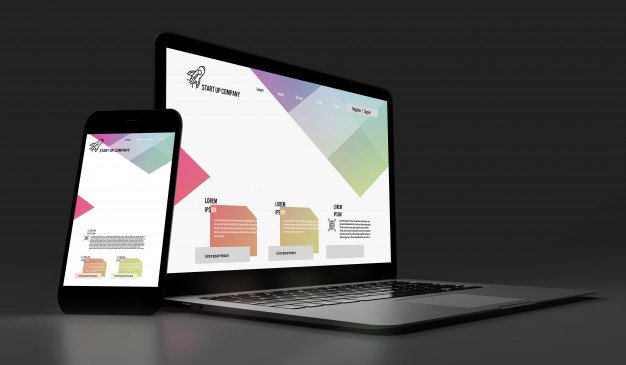It is no secret among online business marketers and website builders that the Bootstrap templates and themes could be their first option in terms of building a web presence. There are many reasons why people tend to use handy Bootstrap templates as:
- Primarily, most of the designers tend to use this as boilerplate. Bootstrap is out there with us for long, and people are so familiar with it. Many find it much riskier to switch to other options unknown to them.
- Bootstrap is time-tested, and it also found to be valid. It is a tool, which is time-tested and can also pave a strong foundation for websites.
- An endless collection of classic Bootstrap templates now helps you construct any type of website you want. It also has high flexibility and rich features, so irrespective of a regular blog or portfolio site, you can get it all here.
- The community around Bootstrap is so immense and extensive. This constantly expanding expert community will give you plenty of choices and unrelenting support for any issues.
- Most importantly, Bootstrap is a freemium product and also boasts of its high quality. You will come across countless free templates of Bootstrap, which won’t disappoint you at all. All these could act as a quick fix to your web development problems from time to time. In addition, they will also give you the apt solutions on which you can build safely.
Some important things you need to know about Bootstrap 4 themes
As we have already seen, Bootstrap is a very powerful but freemium CSS framework with an impressive selection of jQuery plugins, components, layouts, and UI/UX elements. The primary thing about Bootstrap is that it can be availed for free by the users. Now, the extreme popularity of Bootstrap has also urged web developers and designers from across the globe to land on this platform and uses it as a top choice in their projects.
If you are also planning to use framework or workflow tools in your web projects, one should always make a note about the updated version of Bootstrap. The latest update is Bootstrap 4, which comes with a custom set of tools and features for the users to benefit from. The new version Bootstrap will certainly help the developers to create business websites flawlessly with ease.
A few key things to remember while using Bootstrap
You should know that there are different types of Bootstrap 4 themes and templates available out there, both official and third party. So, if you consider using one, always make sure that you do a thorough baseline analysis to identify the best theme for your purpose. In fact, with an abundance of choices, it will always be difficult for a customer to feel overwhelmed about the choice and get confused. This will be more so in case of the beginners who don’t have an idea about how to make use of the best Bootstrap 4 template for their purpose. If you are among one of those amateurs who are confused about Bootstrap 4 templates, here we will discuss a few handy things which will help you out in making the right choice.
When to consider using a Bootstrap template?
The ones who are into website design or the developers who are applying the CSS, as well as a markup of Bootstrap, would have some basic default designs handy. Many don’t want to customize Bootstrap, which also isn’t ideal as it will make your site look similar to many others out there. So, the best move is to take any of the Bootstrap templates which are useful for you and then customize it to match your needs as well as to look unique.
When it comes to choosing a default template, the design may not seem to be very appealing because the providers tend to make those pretty simple with some basic features embedded. So, to bring a professional look to the website, you should try to work further on it and customize it. For this, designers need to pay attention to the CSS framework to make the end product more stylish. There are many tools to help you customize the Bootstrap templates.
Tools to customize Bootstrap themes
It is so easy to create Bootstrap templates and themes, but it may be confusing if you don’t use the right tools. In the case of beginners, it could be somewhat difficult until they get a good grip on it through practice. Adding to it, they also need to pay close attention to the fine details to set things right, which is time-consuming. Fortunately, many tools are there to help these novice Bootstrap web builders to create customized Bootstrap templates quickly and easily. Let’s explore some such tools.
-
Sublime Text
This tool has a fair number of features to help web development. On using this tool, you can get quick access to many quick windows for the project code. Adding to it, you can also see the codes which you have written on the panel.
-
Anvil
The same group of developers had developed both Anil and Hammer, and you use both these tools independently. Anvil could work the best for the localhost servers, which could further let you preview the themes and choose the best for your purpose.
-
Hammer
As we said above, Hammer could be used in combination with Anvil or independently. It is a Mac-based development tool that comes with a handful of features to develop Bootstrap themes and static sites. With this tool, you can ensure that you make use of various HTML in the standard templates for further customization. Hammer could also be used to compile the languages like CoffeeScript, SASS, JavaScript, Markdown into CSS, and HTML, etc.
-
SASS
If you are planning to create a template of design a full-fledged website, then you may know that the Bootstrap 4 framework is built primarily on the SASS (Syntactically Awesome Style Sheets). In simpler terms, SASS is a wonderful scripting language that could be interpreted to CSS. You should also note that SASS is a scripting language used in almost every case.
There are many other tools too to be used for customization of Bootstrap as Grunt, Harp, Bootply, Brix.io, Bootstrap Starter Kit, etc. which could be handy for the developers and designers. All this help to pay attention to the crucial elements of Bootstrap customization and help you build the most relevant and user-friendly websites.
Read Also:





















